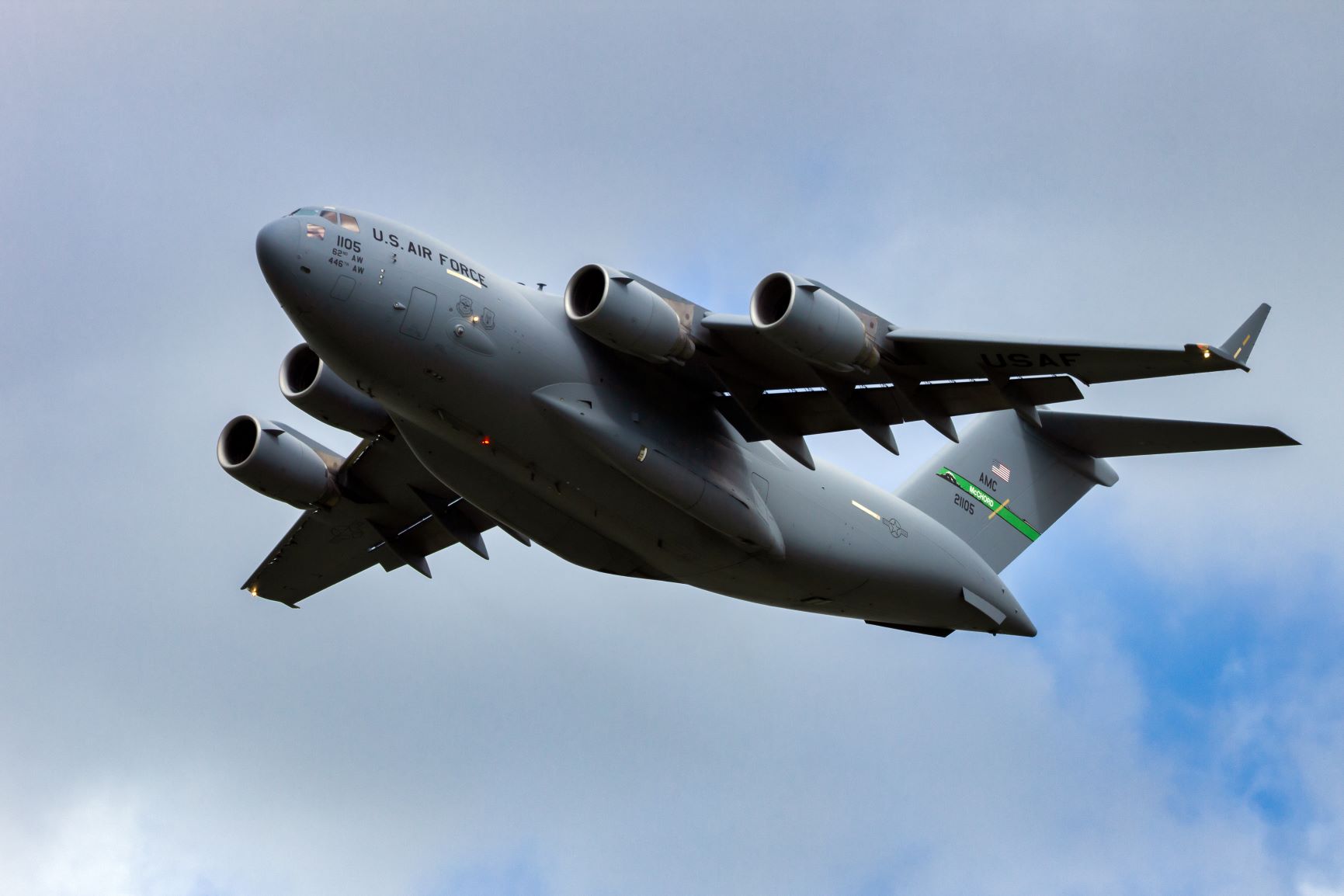Time Building
Wherever you want to end up in aviation, it takes experience to get there. How you get that experience can vary. So, how do you efficiently get the hours you need to get you where you want to go? I’ll break down a handful of the most common options and in the areas I have experience (mostly CFI, airlines, and military reserve) I’ll give you my take on them, and then show you how to use Flt Pages to help find those jobs.
Flight Instructing
 The most common way to build time en-route to a pilot career. It doesn’t really matter which direction you want to go (airlines, charter, cargo, or just about any other path), flight instructing provides a great base of experience and is a great resume builder. We’ll take a quick look at a few different ways to land a flight instructing job and then break down down some of the good and the bad.
The most common way to build time en-route to a pilot career. It doesn’t really matter which direction you want to go (airlines, charter, cargo, or just about any other path), flight instructing provides a great base of experience and is a great resume builder. We’ll take a quick look at a few different ways to land a flight instructing job and then break down down some of the good and the bad.
Conventional Route
Get your ratings and apply to flight schools near where you live/want to live. If you need a resume template, there’s a great sample in the Resources section of The Backseat Pilot.
Train Where you can Work
A more popular option is to train with a flight school that has a history of interviewing and hiring their CFI students. In this case, when choosing where to train, look for schools that like to hire their students. Of course, you’ll rarely (if ever) get a guaranteed job when signing up, but assuming you work hard and fly well, you have a good chance of getting hired. It’s a win/win for you and the flight school.
Airline Career Programs
To take this a step farther, an even more enticing option, especially if your goal is to fly for the airlines, is to train with a flight school that has partnered with the airlines.  Basically, you interview and are hired by a regional airline, but instruct at the flight school until you reach your ATP minimums. From there, the airline takes care of your ATP-CTP course as you transition to their training program. And to make it even better, many regional airlines provide employee benefits while you instruct (travel privileges, medical, bonuses, etc.), and also provide seniority based flow through programs to a major airline (AA Cadet, United Aviate, UPS FlightPath). With these flow through programs, once you’re accepted into the regional you more or less have a major airline job in your back pocket.
Basically, you interview and are hired by a regional airline, but instruct at the flight school until you reach your ATP minimums. From there, the airline takes care of your ATP-CTP course as you transition to their training program. And to make it even better, many regional airlines provide employee benefits while you instruct (travel privileges, medical, bonuses, etc.), and also provide seniority based flow through programs to a major airline (AA Cadet, United Aviate, UPS FlightPath). With these flow through programs, once you’re accepted into the regional you more or less have a major airline job in your back pocket.
To find flight schools with airline career programs on Flt Pages, use the gear icon to the right of the search bar and from the Airline Career drop down, select the programs you’re interested in. Your search will only return flight schools with those programs. There’s a whole lot more to these programs and how they work than is mentioned here. For all the details check out our Airline Career Programs posts for AA, United, and UPS.
Shameless plug: If you are going down the flight instructing route, check out our outstanding flight instructor lesson plans at The Backseat Pilot.
The Good
- Most common time building track so there are generally a lot of jobs
- Great resume builder
- Become an expert (they say the best way to learn is to teach)
- Airline benefits if you’re in one of their programs (medical, travel, bonuses, etc.)
- Straight to the airline once you meet the hour requirements
The Bad
- Not great money (varies)
- Hours vary based on flight school demand
- Work schedule can be inconsistent
- Students may try to kill you (we’re half kidding)
My Take
If the military isn’t something you’re considering (more on that below), I think flight instructing is one of the best, if not the best option to build your time. It’s definitely a lot of work and the checkride is by no means easy, but employers know how much work goes into it, and love to see the experience. Teaching also takes your knowledge to another level. You’ll learn more in the first few months instructing than you did through all of your training.
Generally, the faster you can get your time and move on, the better, seniority is everything at the airlines. Career schools with a steady flow of students tend to be popular places to build time, but there are a lot of benefits to smaller schools as well (different types of students, different perspectives, change of pace, unique opportunities) so don’t write them off entirely.
Not Flight Instructing
Flight instructing isn’t for everyone. Lucky for you, there are more options. Although less common than flight instructing jobs, we’ll look at a few opportunities to build time along side, or instead of, flight instructing.
Skydive Flights / Scenic Tours
Get your commercial rating and then grab a job with a local company and build your hours dropping skydivers or flying scenic tours. While these flights can be redundant, and seasonal, they can definitely add some time to your logbook.
seasonal, they can definitely add some time to your logbook.
Glider Towing
One of the very few jobs you can get paid to do with only a private pilot license. Glider towing training and endorsement requirements are listed in FAR 61.69. Once endorsed, FAR 61.113 allows a Private Pilot to tow banners for compensation.
Banner Towing
A commercial certificate is required, and you’ll have to go through a banner towing training program. Many banner towing companies will provide training if you’ll stay on for a certain amount of time so call around and see what opportunities are in your area.
Side note: There are rumors that some of these options (towing, skydive, etc.) don’t necessarily provide the “quality hours” potential employers want to see. The flights are often extremely repetitive, taking off and landing at the same airport, flying the same route, and almost always in day VFR conditions. How future interviewers will look at these hours will vary, but it’s worth checking in to.
Charter “SIC”
Numerous single pilot charter aircraft don’t require an SIC type rating to get you in the right seat, and the owner’s insurance rates go down if they have an extra pilot in the cockpit. This is another win/win. You grab a job with minimum training, and start racking up time, while the owner’s save on insurance costs (it’s not quite this cut and dry – check out this Bold Method article that breaks down the ins and outs of logging SIC time in single pilot aircraft).
If the charter world is something that interests you, this can be a great entry into the industry. Make yourself available as often as you can, build a reputation with the company, and get in when they’re ready to hire. Or, worst case, pad your resume with the hours and experience.
Freight Dog (Small plane cargo)
Another option is the cargo world. A lot of cargo operations require small single or twin engine airplanes to move their cargo, and often only a commercial rating is required to get started.
At the time this is being written, Ameriflight, for  example, requires a commercial multi-engine land and instrument rating with 500 hours total time and 25 hours multi-engine to apply as a first officer.
example, requires a commercial multi-engine land and instrument rating with 500 hours total time and 25 hours multi-engine to apply as a first officer.
These jobs can be a great way to build some serious experience: Single pilot (in some cases), IFR, weather, long nights, maintenance issues, etc. The pay isn’t great and the days (let’s be honest, the nights) can be tough, but there aren’t many cushy starting jobs in aviation.
If the freight dog life is something you’re interested in, this might be a good start for you, especially since the freight world is starting to jump in to the career progression programs like the regional/major airlines. UPS, for example, has started their UPS FlightPath program which includes time at Ameriflight and a path to becoming a UPS pilot.
The Good
- Different types of experience
- If teaching isn’t for you, these aren’t teaching jobs
- More career specific experience (cargo, charter, etc.)
The Bad
- Not necessarily “quality hours” for your resume
- Irregular schedules
- Inconsistent / seasonal demand (towing, scenic, charter)
- Cargo – night flying and gone often
Air Force Reserve
Rather than spending tens of thousands of dollars on training and then taking a low paying job to build experience to get you to a slightly higher paying job, why not have Uncle Sam send you through the best pilot training program in the world, cover the cost of it ($1 million – $10 million depending on the aircraft), and pay you to go? Of course, it’s not quite that easy. Getting the job takes a decent amount of time and work. Basically, you’ll take the required tests (AFOQT and TBAS), put together a package (resume, test scores, college diploma, letters of rec., etc.), and start applying to different squadrons.
Of course, it’s not quite that easy. Getting the job takes a decent amount of time and work. Basically, you’ll take the required tests (AFOQT and TBAS), put together a package (resume, test scores, college diploma, letters of rec., etc.), and start applying to different squadrons.
Fighter, Bomber, Cargo, Tanker? The Reserves are just like applying for a job; only apply to the squadrons you want to fly for. Once training is complete, you keep a lot of control as a Reserve pilot in the military.
Air Force pilots require a 10 year commitment after you get your wings, so about 11.5 years minimum, but most stick around a lot longer. We break the process down in a lot more detail in our Becoming an AF Reserve Pilot post.
The Good
- Better training
- Better aircraft
- Better pay
- Huge resume builder
- Travel
- Retirement if you stick around for 20+ years
- Decent control over your life as a Reservist (vs active duty)
The Bad
- Time commitment (2.5 years of training depending on the aircraft, 10 year AF commitment)
- Gone for extended periods of time
- Deployments (depend a lot on the airframe)
- Can be tough on a family
- Hours can be slower to build
Personal Opinion
If you can handle the change in lifestyle and commitment, I think this is a no brainer. Air Force training and experience was the reason I got a major airline interview ahead of my peers. Airlines, cargo, just about everyone likes to hire military. On top of that, it’s an awesome second source of income in good times and, more importantly, bad times (like furloughs). For more details, here’s our Becoming an AF Reserve Pilot post.
Let’s Sum it Up
There are a lot of options to build the time you need to reach your goals. If you have a specific career goal in mind try to get into that industry as soon as you can. Otherwise, in my opinion, flight instructing or a military reserve job are the best options to build quality time, build the resume, and take the next step.
Don’t make a decision based on a single opinion, we all have different experiences and recommendations – feel free to help those making their way in the aviation industry and leave yours in the comments below.
Flt Pages and Jobs
We built this website to try to make finding all things aviation, especially jobs, easier for everyone. From the home page or the search page, use the gear icon to the right of the search bar, and select the specific hiring criteria you’re looking for. Your searches will only return listings based on those selections. Currently those selections are only limited to flight schools, but as we grow expect to see considerably more job listings as well as search options.
